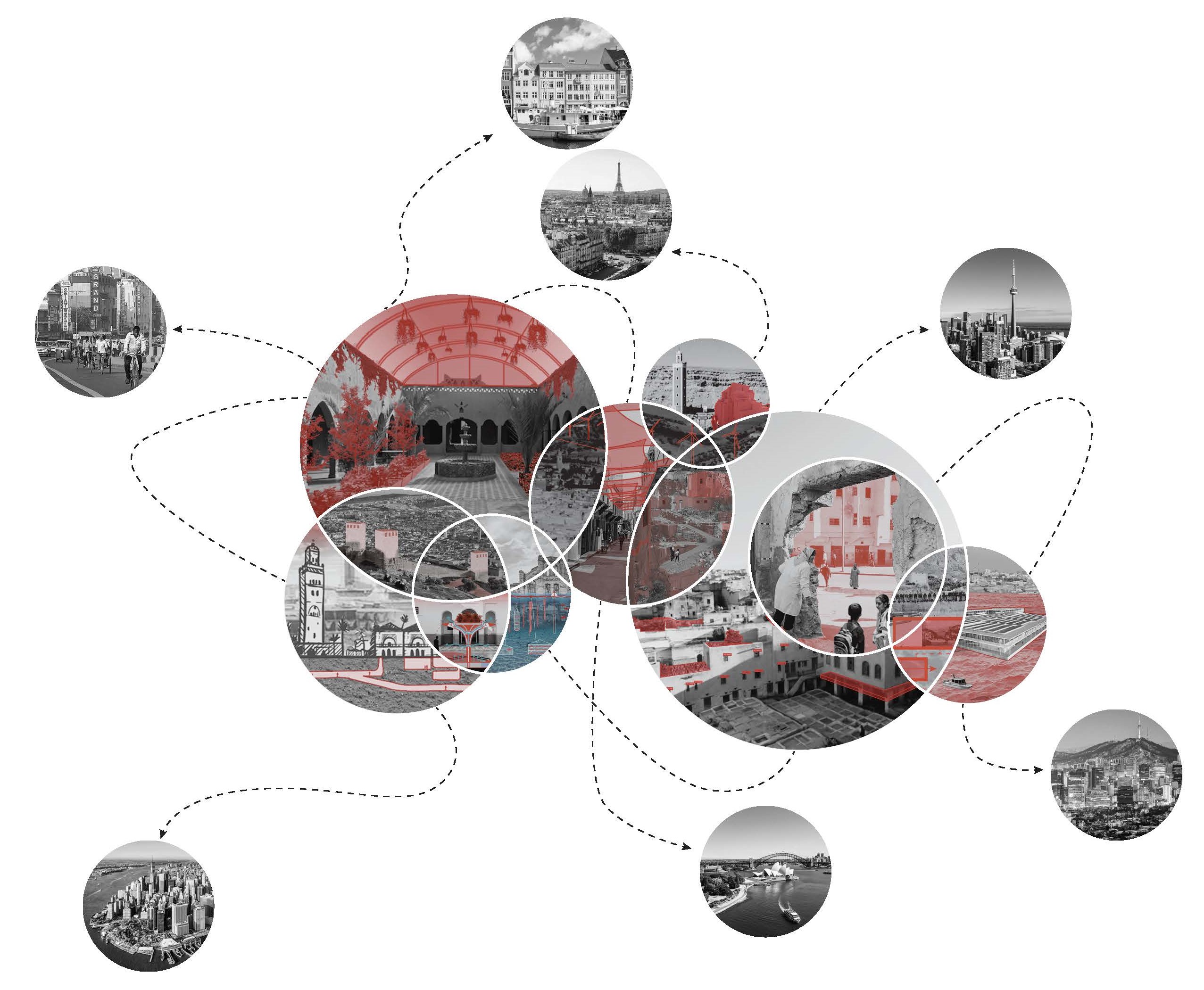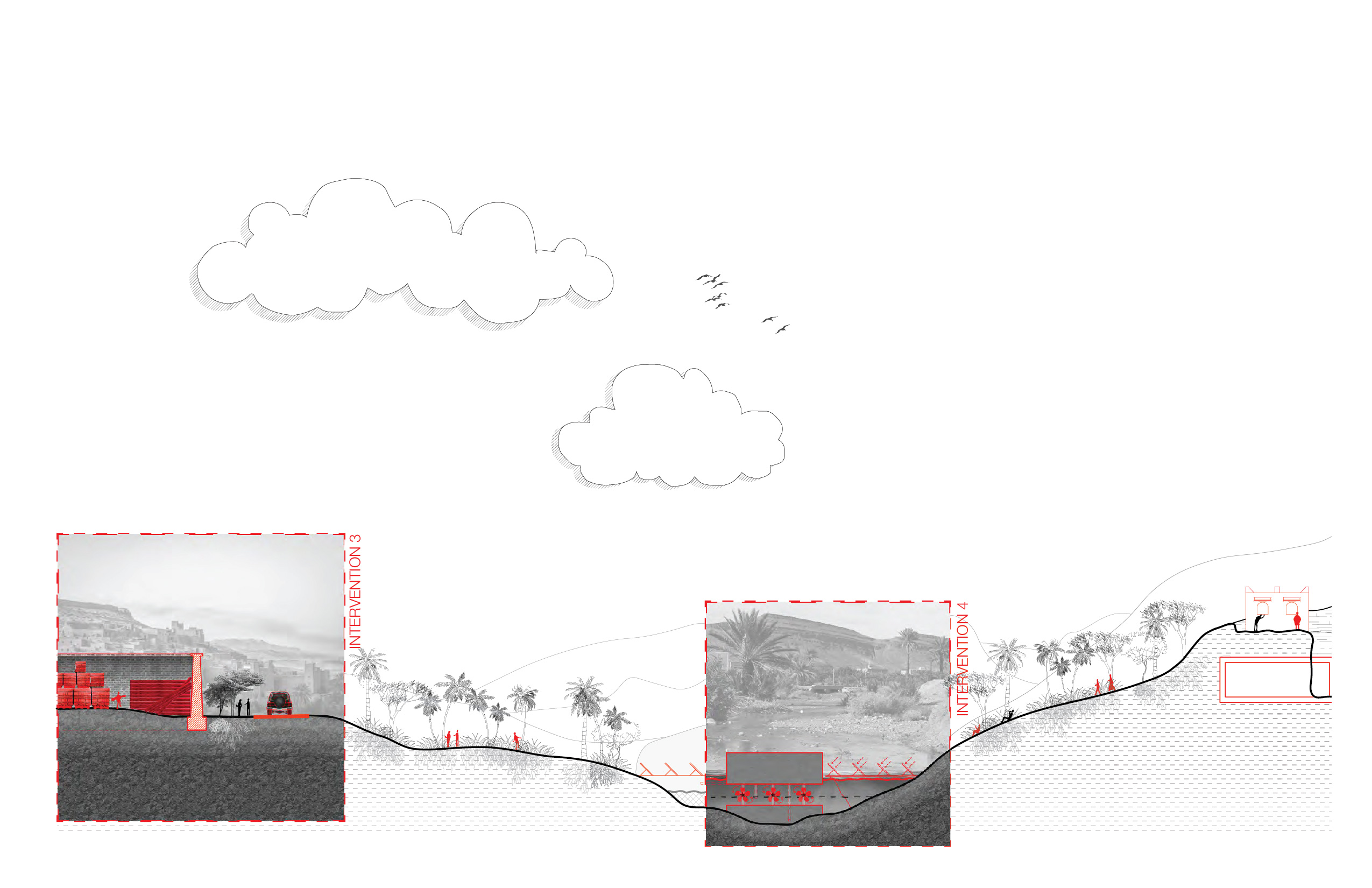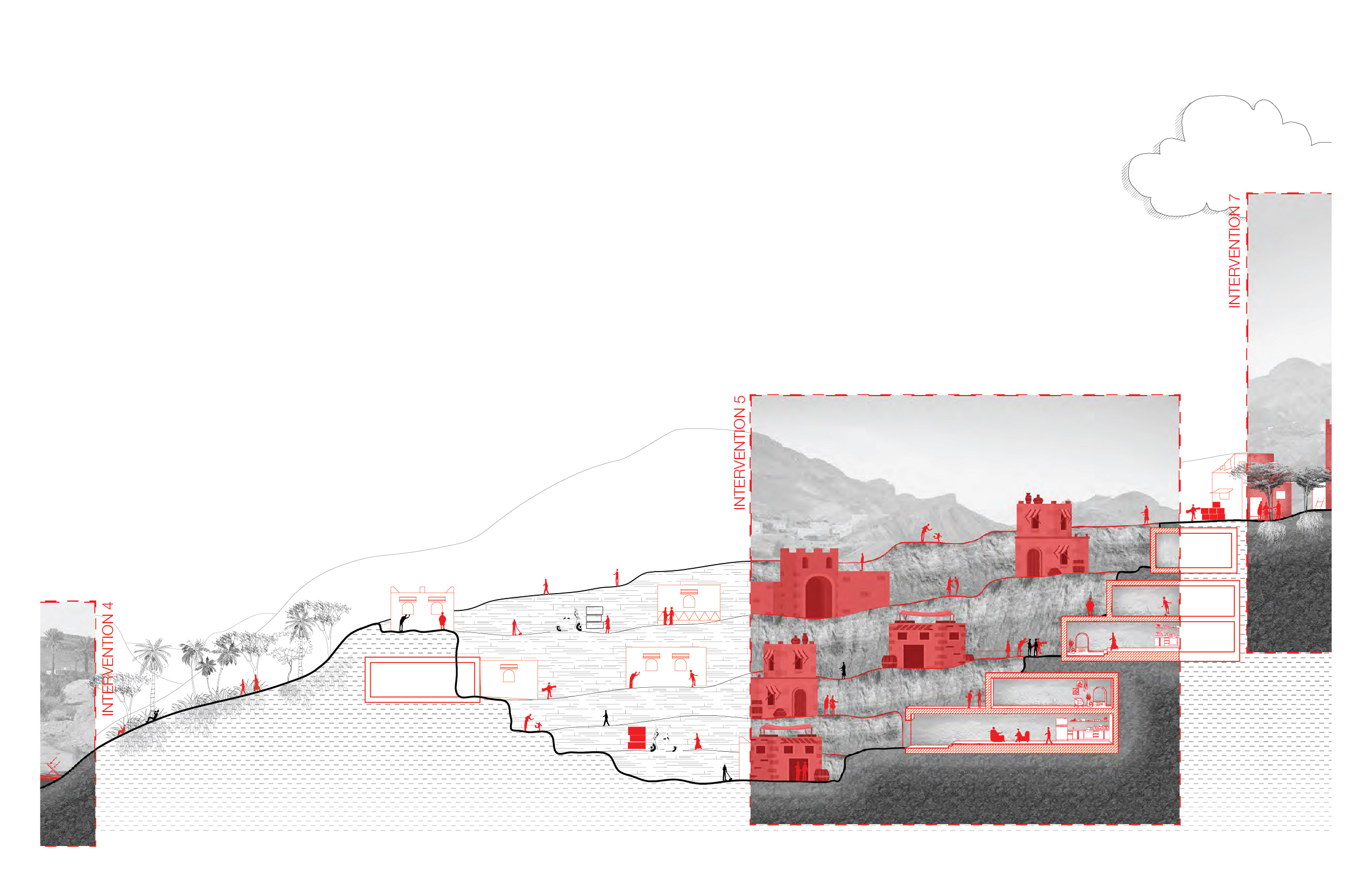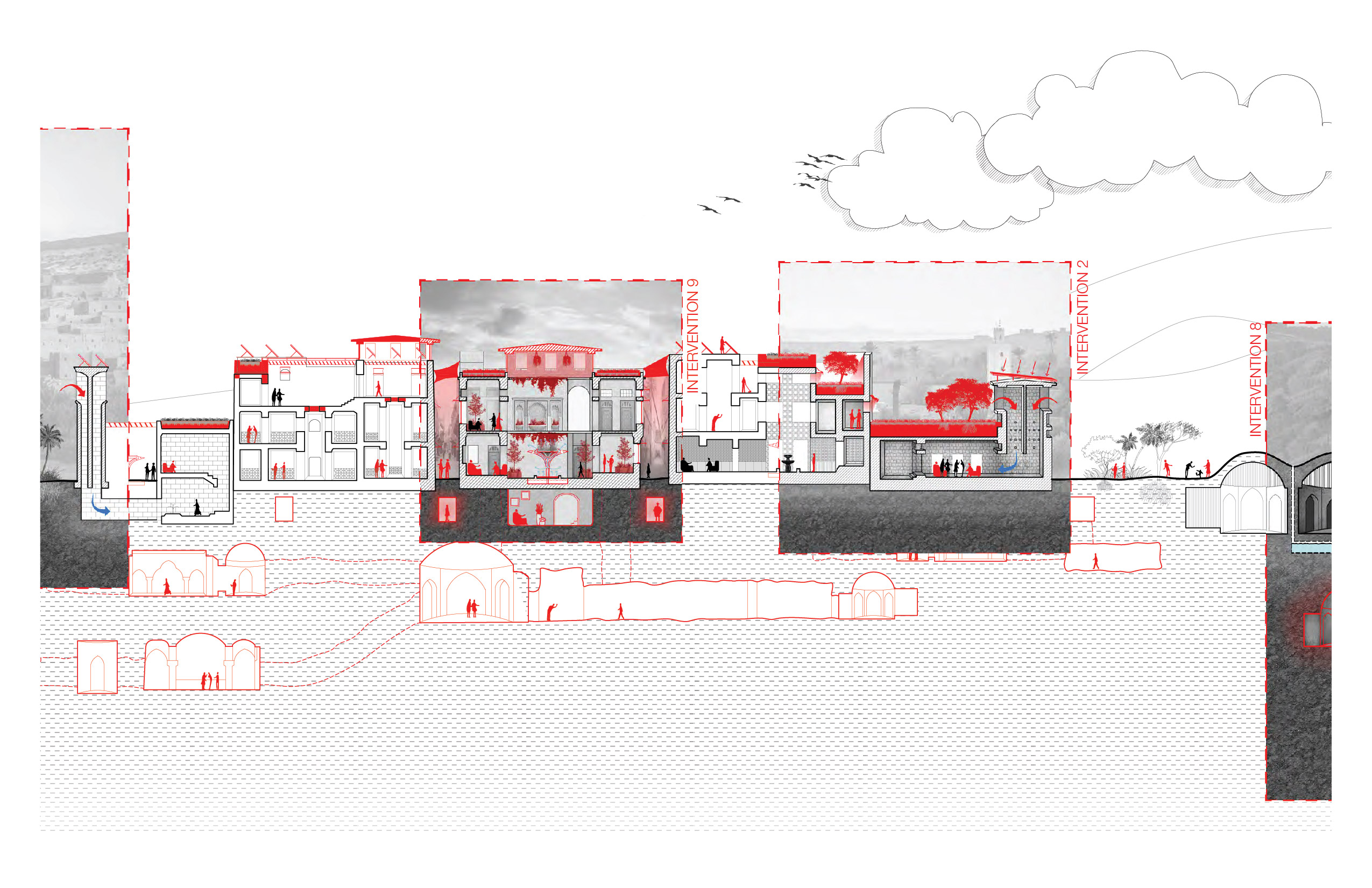Jasmin (Minji) Kim, Jeannette Wehbeh, Taylor Marshall
Pale Blue Dot:
Pale Blue Dot:
Adaptation in the Flux of Chaos
The impact of climate change will not spare a single aspect of life as we know it and adaptation is our only option at this point in the trajectory of the world’s demise. Although we will be experiencing similar climate catastrophes around the globe, each region will have its own adaptation method dependent on location and culture. Synthesizing our research resulted in a new map of adaptability conceived of Goldilocks Zones deemed habitable lands. These Goldilocks Zones will be the most vulnerable to the elements of chaos and the most significant regions affected by the year 2100. Fez, Morocco was selected as the geographical area of study due to its numerous elements of chaos, including natural disasters, high land surface temperatures, wildfires, air pollution, rising air temperatures, and an influx of migrants.
Flux is chaos-seeking balance through adaptive processes. Our research towards the year 2100 and the layers of the climate chaos we will face, combined with conceptual theories on adaptation, shows no ‘single’ solution for adaptability. To adapt to our current and future evolving environment, a series of fluctuating initiatives that tackle issues at various scales is instrumental for present and future change. Nine strategies, applied to Fez, Morocco, can be applied to any other city within the Goldilocks Zone. It is a framework to guide the evolution of architecture through climate change while maintaining tradition, meaning, and comfort.
Flux is chaos-seeking balance through adaptive processes. Our research towards the year 2100 and the layers of the climate chaos we will face, combined with conceptual theories on adaptation, shows no ‘single’ solution for adaptability. To adapt to our current and future evolving environment, a series of fluctuating initiatives that tackle issues at various scales is instrumental for present and future change. Nine strategies, applied to Fez, Morocco, can be applied to any other city within the Goldilocks Zone. It is a framework to guide the evolution of architecture through climate change while maintaining tradition, meaning, and comfort.







